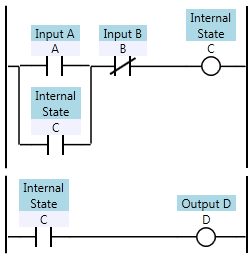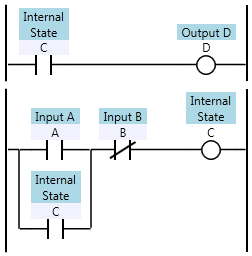In programming, we have a principle called Don’t Repeat Yourself (DRY). It’s a very important idea, and I’d argue that most of the advances in programming environments over the years have been in support of this principle and its related principle, Once and Only Once (OAOO).
Unfortunately, like every “principle”, it eventually takes on the level of dogma, and the people spouting it sometimes forget why it exists. These principles aren’t ends in themselves; they’re not self-justified. They are general principles to follow, but only when they support the end-goal of solving problems in more efficient, and more maintainable ways.
Let me give you a very simplified example of how it can be carried to far. Consider the following declarations in C#:
const int MOTOR_1_START_TIMEOUT_MS = 5000;
const int MOTOR_2_START_TIMEOUT_MS = 5000;
Consider that I could write:
const int MOTOR_1_START_TIMEOUT_MS = 5000;
const int MOTOR_2_START_TIMEOUT_MS = MOTOR_1_START_TIMEOUT_MS;
or…
const int MASTER_MOTOR_TIMEOUT_MS = 5000;
const int MOTOR_1_START_TIMEOUT_MS = MASTER_MOTOR_TIMEOUT_MS;
const int MOTOR_2_START_TIMEOUT_MS = MASTER_MOTOR_TIMEOUT_MS;
Notice that all 3 versions accomplish the same end-result, but they are semantically different. The first version means that the two motors have independent timeout values, and they’re just co-incidentally the same. The second says, “motor 2’s timeout must be the same as motor 1’s timeout.” The third says that both motors must have the same timeout.
In my opinion, any of these three versions might be correct for various systems involving two motors. However, if you follow the DRY principle without thinking about it, you’ll assert that the first version is incorrect. In fact they’d probably say the only correct version should be:
const int MOTOR_TIMEOUT_MS = 5000;
(…ignoring, for the moment, that it should probably be a configurable value rather than a constant.)
Why does this simple example matter? Consider the case of a PLC-based control system with 10 motors. Let’s say at the start that all the motors, and all the drives running them, are identical. If you’re familiar with my philosophy of PLC programming, you know that my default solution for this would be to have 10 ladder logic routines, each called MOTOR_01, MOTOR_02, etc. Each routine would basically be a copy. That really doesn’t follow the DRY principle, does it? Certainly no, not at face value.
You might not believe it, but I get the occasional “hate mail” to my blog’s email address because of some of my technical opinions here. The most recent one, comically, referred to me (and all PLC programmers for that matter) as “dinosaurs”. I’m not sure what the rest of the message said, because if you can’t be polite, I’m not going to bother listening to you. However, I believe it’s this flagrant violation of things like the DRY principle that really rubs traditional PC programmers the wrong way when you start to talk about the principles of PLC programming.
Of course, my views about PLC programming are just that – general principles that need to be evaluated in the light of each and every project. I’m just asserting that most of the time you should be following a principle of a one-to-one mapping between ladder logic and real-world hardware. That doesn’t mean it’s an unbreakable rule.
Going back to the 10 motor example, the way you structure your program should be based on a decision you make about anticipated future changes to the system.
If you write one generic routine for controlling a motor, and you call it 10 times, you’re saying, “I always expect all 10 of these motors to behave in an identical way for all of the future.” Of course, you can allow variations, but you have to do that by passing in parameters for each instance. You have to be explicit about what can vary. Adding new parameters is typically a harder task than just modifying one of the 10 existing motor routines when you need to change the behavior of one motor.
On the other hand, if you follow my principle of 10 motor routines for 10 motors, you’re saying, “I expect that we’ll rarely need to make a sweeping change to all 10 motor control routines, but that we are likely to modify one or two routines to make them perform differently than the others.” I personally believe this is usually closer to the truth. As a system ages, perhaps one motor drive will blow, and you can’t buy the original drive anymore, so you have to replace it with a new one that has different control signals. That’s a fairly typical scenario, in my experience. Also, even though you might have 10 identical drives and motors, the process may or may not be identical for each motor. They may perform vastly different functions, and it’s likely that you’ll want to change just one or two of them to access more advanced features of the drive when you refine the process. Of course, I also like that with a one-to-one mapping in a PLC, troubleshooting becomes much easier because with online monitoring you can see each control routine executing just for that motor. You can make temporary changes just to one motor routine to bypass a faulted drive, or to do a million other changes that you’ll never be able to predict when you’re writing the logic.
The fact is, we’re physically limited by the number of drives we have. The amount of time it takes to make a change to all 10 motor control routines is tiny compared to how long it takes to make physical changes to 10 drives. This effort scales with the size of the system. In PC programming, you can have a system with millions, even billions, of objects, but in the PLC world, you’re limited by physical reality. The consequences of repeating yourself aren’t always as great, and you need to take that into account, and weigh it against your other goals.
That doesn’t mean I can’t imagine a case where you really want to assert that the motors all have to operate identically, all of the time, forever in the future. There are systems with load sharing drives where the system wouldn’t operate if you mismatched the drives or motors. That’s a design decision you have to make. Principles are only there for guidance, but they are not absolute rules, and they shouldn’t be treated that way.

![ABC0C1 Ladder logic defining C[1] as a function of A, B, and C[0]](http://www.contactandcoil.com/wp-content/uploads/ABC0C1.png)

